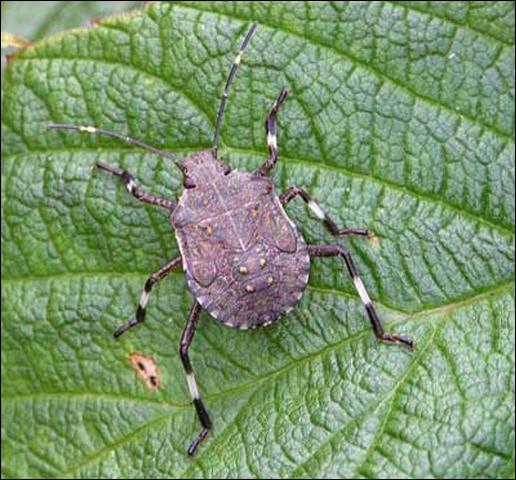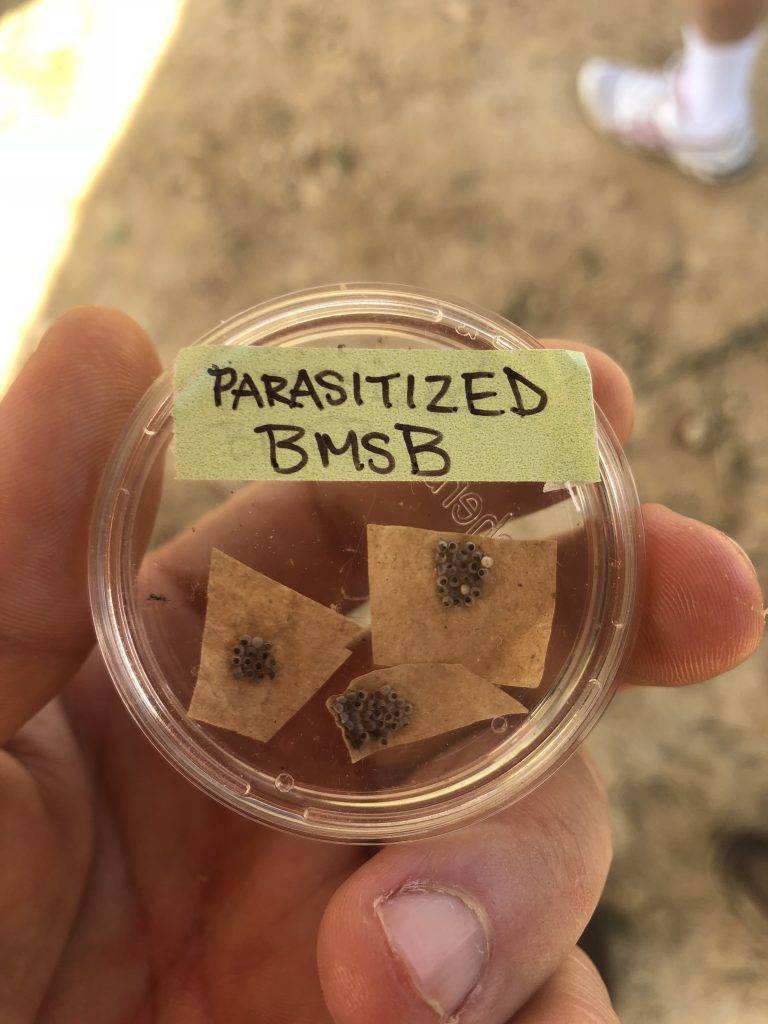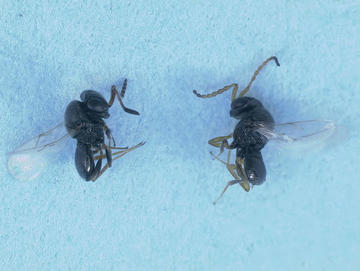A few weeks ago I was lucky enough to attend North Carolina State’s Tomato Field Day, at the Mountain Horticultural Crops Research and Extension Center in Mills River, NC. Every summer crowds flock from all over the Southeast to learn what’s new in the world of tomatoes. Since it’s not always convenient for you to drop what you’re doing to make a road trip to North Carolina, I’ll highlight something I learned from the field day.
Stink Bug Control by Dr. Jim Walgenbach
Distribution
The brown marmorated stink bug (BMSB) was introduced into the United States from Asia. The insect pest was first found in Pennsylvania and is suspected to have made its way to the US in packing material. BMSB was first reported in 2009 in Hillsborough County, FL and since been found in additional Florida counties. It has a wide host range including fruits, vegetables, and ornamentals.

Fifth instar nymph of the brown marmorated stink bug on raspberry in Allentown, Pennsylvania. Photo Credit: Gary Bernon, USDA-APHIS
Identification
BMSB has a typical stink bug body shape and size with a mottled brown coloring. The key identification feature is alternating dark and light bands on the last two antennal segments.
Biological Control with Natural Enemies
Dr. Walgenbach’s team is currently researching the impact of suppressing BMSB populations by native predators such as: katydids; jumping spiders; earwigs; and lady beetles. Current observations indicate only a minor effect from these predators on BMSB.

BMSB egg masses parasitized by T. japonicus. Photo Credit: Matt Lollar, University of Florida/IFAS Extension.
Trissolcus japonicus Assessment
A regional effort has been implemented to monitor the introduction, spread, and efficacy of the Asian parasitoid Trissolcus japonicus. Trissolcus japonicus is a tiny wasp that parasitizes the eggs of various stink bug species. It was first collected from China and brought back to quarantine facilities in the US for evaluation, as a potential biological control agent. Host-specific tests have indicated that T. japonicus prefers to parasitize BMSB eggs over eggs of other stink bug species. It is suspected that release permits for the wasp will be available from the USDA in the near future.
Reporting in Florida
The brown marmorated stink bug overwinters in homes to keep warm. If stink bugs are found in yuor home, they may be the BMSB and should be reported to the Florida Department of Agriculture and Consumer Services Division of Plant Industry. Specimens should be collected for identification.
To follow the research of Dr. Walgenbach and his colleagues, please visit NC State’s Entomology webpage.
- Crops to Consider for Fall Planting - September 26, 2025
- Benefits of Manure Fertilizers and Analysis - March 21, 2025
- Mushrooms – A Crop Worth Consideration for the Back Forty - October 4, 2024

